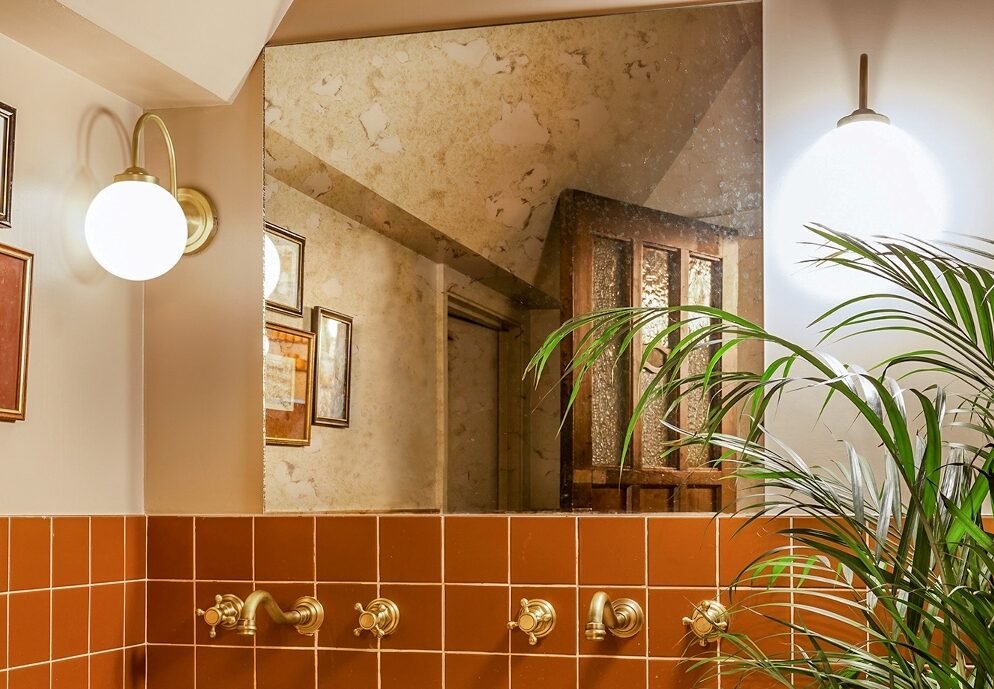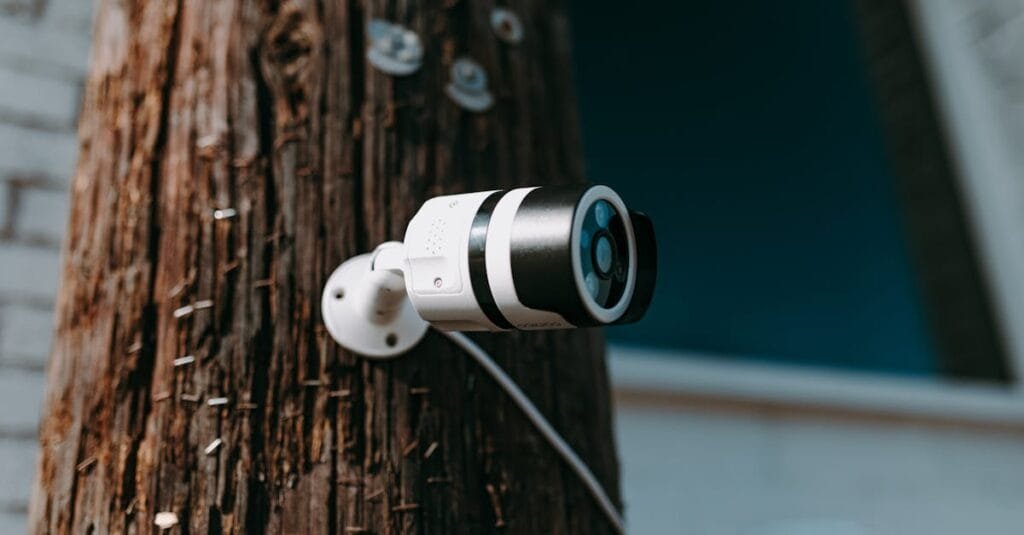Bedroom Lighting Ideas
Create Your Perfect Sleep Sanctuary
Your bedroom should be the most restful room in your home—a sanctuary where you unwind after long days and wake refreshed each morning. Yet so many bedrooms rely on a single harsh ceiling light that does nothing to create calm or comfort.
The secret to transforming your bedroom into a genuinely relaxing retreat? Thoughtful, layered lighting that adapts to different moods and activities. Whether you’re getting dressed in the morning, reading before sleep, or creating intimate ambiance, the right lighting makes all the difference.
Let’s explore practical bedroom lighting ideas that combine style, function, and that all-important sense of tranquility.
Why Bedroom Lighting Deserves Special Attention
Unlike kitchens or living rooms, bedrooms serve a specific purpose: rest and relaxation. Your lighting should support this, helping you wind down in the evening and ease into your day gently in the morning.
Poor bedroom lighting causes real problems:
- Harsh overhead lights stimulate rather than soothe, making it harder to relax before sleep
- Insufficient reading light strains eyes and creates frustration
- Single light sources create shadows and fail to illuminate wardrobes or dressing areas properly
- Cold, bright bulbs disrupt your natural sleep-wake cycle
The solution isn’t complicated—it’s about choosing the right fixtures, positioning them thoughtfully, and using appropriate bulb temperatures. Let’s break down exactly how to achieve this.
Layer Your Lighting for Complete Flexibility
Professional interior designers always work with three distinct lighting layers. This approach gives you complete control over your bedroom’s atmosphere:
Ambient lighting (general illumination):
This is your foundation—soft, overall light that fills the space without overwhelming it. In bedrooms, ambient lighting should be gentle and diffused rather than bright and direct.
Consider warm-white LED ceiling lights with dimmer switches, flush or semi-flush fittings that sit close to the ceiling, or even recessed spotlights on dimmers pointed at the ceiling to create reflected glow. The key is avoiding exposed bulbs or harsh downward light.
Task lighting (functional focus):
This addresses specific activities—reading in bed, applying makeup, choosing clothes from the wardrobe. Task lighting needs to be brighter and more directional than ambient lighting, but positioned so it doesn’t disturb a sleeping partner.
Bedside reading lights, adjustable wall-mounted lamps, or pendant lights either side of the bed all serve this purpose beautifully. Dressing table lights or wardrobe lighting also falls into this category.
Accent lighting (mood and atmosphere):
The finishing touch that adds depth and interest. Accent lights might highlight artwork, create a gentle glow behind furniture, or simply add warm pools of light that make the space feel cozy.
Table lamps on chests of drawers, LED strips behind headboards, or small spotlights directed at textured walls all create subtle accent lighting that elevates your bedroom from functional to inviting.
By combining these three layers and putting each on separate switches or dimmers, you can create exactly the right atmosphere for any moment—bright and energizing for mornings, soft and focused for reading, or dim and calming for winding down.
The Case for Warm Brass and Antique Finishes
While sleek chrome and brushed nickel have their place, brass lighting brings something special to bedrooms: warmth, character, and timeless elegance.
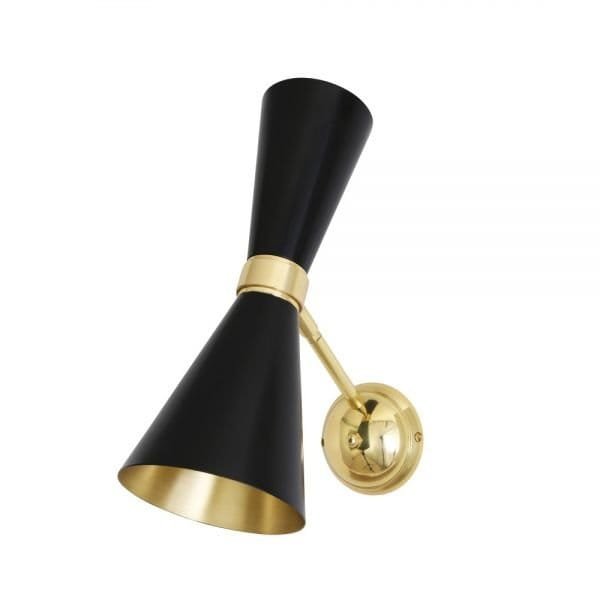
Cairo Swivel Wall Light
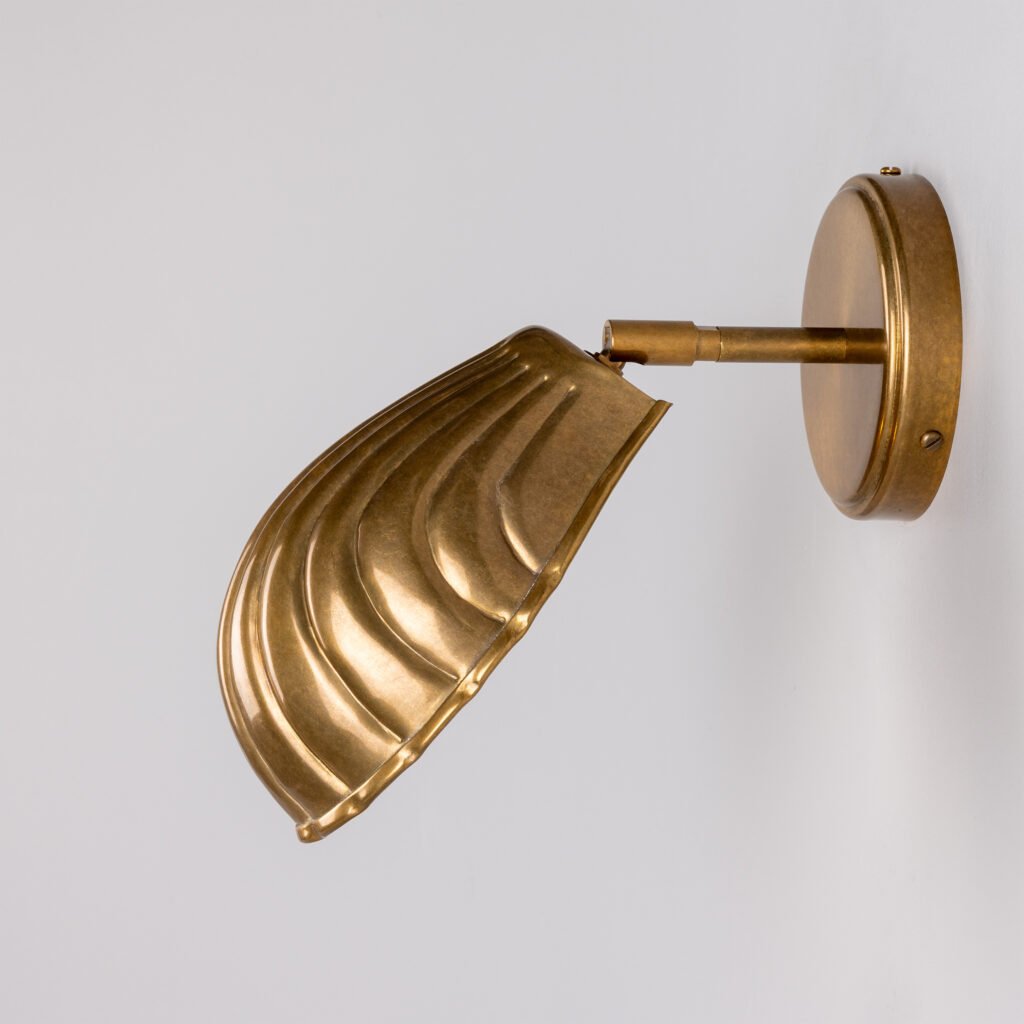
Adjustable Brass Shell Wall Light
Why brass works in bedrooms:
The golden tones of brass—whether polished bright, aged to a soft patina, or finished in antique bronze—add instant warmth that cooler metals simply can’t match. This warmth creates a more inviting, boutique-hotel quality that transforms the feeling of your space.
Brass also references traditional craftsmanship and quality. Hand-finished brass fixtures from makers like Mullan Lighting showcase beautiful detailing and substantial construction that mass-produced fittings lack. These are pieces you’ll treasure for years, not replace when trends shift.
Brass bedside pendants:
Hanging brass pendant lights either side of your bed creates symmetry and sophistication whilst freeing up bedside table space. The metal’s reflective quality catches and bounces light beautifully, creating a soft glow rather than harsh illumination.
Choose pendants with fabric or frosted glass shades to diffuse the light gently—bare bulbs in brass fittings can be too bright and glaring for bedside use.
Brass wall sconces:
Wall-mounted brass lights offer flexibility and elegance. Adjustable arm sconces let you direct light exactly where needed for reading, then swing them away when not in use. Fixed sconces create ambient pools of light that add atmosphere without taking up surface space.
Position wall lights approximately 120-150cm from the floor (roughly at seated shoulder height) and 15-20cm away from the edge of your headboard for optimal reading light that won’t shine in your eyes.
Embrace Modern LED Technology
LED bulbs have evolved dramatically. Today’s LEDs offer warm, flattering light quality whilst using a fraction of the energy traditional bulbs consume and lasting for years without replacement.
Dimmable LEDs: essential for bedrooms
Investing in dimmable LED bulbs paired with quality dimmer switches gives you complete control over light intensity. Bright enough for getting dressed in the morning, low enough to create calm ambiance in the evening.
When selecting dimmable LEDs, ensure your dimmer switch is LED-compatible—older dimmer switches designed for incandescent bulbs often cause flickering or buzzing with LEDs.
Colour temperature matters enormously
LED colour temperature is measured in Kelvin (K) and dramatically affects how your bedroom feels:
- 2700K-3000K (warm white): This is ideal for bedrooms. It mimics the soft, golden glow of traditional incandescent bulbs and creates a cozy, relaxing atmosphere. This temperature range doesn’t interfere with melatonin production, making it easier to wind down before sleep.
- 3500K-4000K (neutral white): Too clinical for most bedrooms. This cooler temperature feels more like office lighting and can be stimulating rather than relaxing.
- 5000K+ (daylight/cool white): Avoid in bedrooms unless you specifically want energizing light for a dressing area. This bright, blue-toned light suppresses melatonin and makes relaxation difficult.
Always check the Kelvin rating on LED packaging—it’s usually printed clearly alongside the wattage equivalent.
Energy efficiency that makes sense
A 6W LED bulb produces the same light as a 60W incandescent whilst using 90% less electricity and lasting 15-25 times longer. Over the bulb’s lifetime, you’ll save considerably on energy bills whilst reducing replacements.
Brands like Sollux Lighting combine this efficiency with contemporary design, proving that sustainable choices don’t require aesthetic compromise.
Bedside Pendants vs Wall Lights: Which Works Best?
Both options create beautiful, functional bedside lighting, but each suits different situations:
Hanging pendants:
Pros: Create striking visual symmetry, free up bedside table space entirely, offer huge style variety from industrial to elegant, allow light to be positioned precisely above where you need it.
Cons: Require ceiling electrical points (may need electrician), can feel visually heavy in rooms with low ceilings, harder to adjust position once installed.
Best for: Rooms with standard or high ceilings, modern or contemporary bedrooms, situations where bedside table space is precious, creating statement style.
Wall-mounted lights:
Pros: Keep tables clear, easier to install than pendants (wall wiring is simpler than ceiling), adjustable arm versions offer flexibility, work in any ceiling height, easy to add to existing rooms.
Cons: Require wall mounting (need to consider wall construction), take up wall space that could display artwork, fixed styles offer less flexibility.
Best for: Period properties, rooms with sloped or low ceilings, situations where you want adjustable reading light, easier retrofitting to existing bedrooms.
Hanging height for pendants:
As a starting point, hang pendants so the bottom of the shade sits 30-40cm above your bedside table surface, or approximately at shoulder height when you’re sitting up in bed. This positions light for comfortable reading without glare in your eyes.
Adjust based on your ceiling height and personal preference—there’s no single “correct” height, just what works for your specific setup.
Soft Shades and Diffused Light
The shade or diffuser on your bedroom lights is just as important as the fixture itself—it controls how light spreads through the space.
Fabric shades:
Linen, cotton, or drum shades in neutral tones (cream, beige, soft grey) create beautiful, gentle light diffusion. The fabric softens and warms the light, removing harshness whilst creating a cozy glow.
Fabric shades work particularly well with brass or wooden fixture bases, creating texture and warmth.
Frosted or opal glass:
Glass that’s been frosted, etched, or made from opal glass (milky white glass) diffuses light evenly without the softness of fabric. This creates a slightly brighter, cleaner look that suits contemporary or minimalist bedrooms.
Frosted glass is also practical in bedrooms prone to dust, as it’s easier to clean than fabric.
Seeded or ribbed glass:
Textured glass creates interesting patterns and shadows whilst diffusing light. These shades add visual interest and character, particularly effective in bedside pendants where you view them up close.
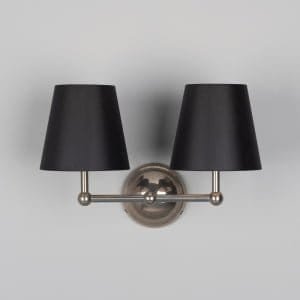
Fabric Wall Lights
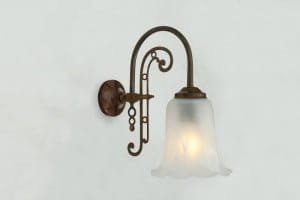
Vintage Glass Wall Lights
What to avoid:
Clear glass shades with exposed bulbs (too bright and glaring), dark or heavily patterned shades (they absorb too much light), overly large shades (they can overwhelm bedroom proportions and create too much visual weight).
Maximizing Natural Light
While this guide focuses on artificial lighting, natural light remains your bedroom’s most important light source during daytime hours.
Window treatments that balance privacy and light:
Sheer curtains or lightweight linen allow soft natural light to filter through whilst maintaining daytime privacy. Layer these with blackout curtains or blinds that you can close at night for darkness.
Avoid heavy, dark curtains that permanently block natural light—your bedroom will feel cave-like and require more artificial lighting during the day.
Strategic mirror placement:
Positioning mirrors opposite or adjacent to windows bounces natural light deeper into your room, making spaces feel larger and brighter. A large mirror above a chest of drawers or leaning against a wall creates this effect beautifully.
Light wall colors:
Pale, neutral wall colours reflect both natural and artificial light more effectively than dark walls, making your bedroom feel more spacious and requiring less artificial lighting overall.
If you love darker walls, ensure you compensate with additional light fixtures to maintain comfortable illumination levels.
Practical Bedroom Lighting Layouts
For double beds:
Install matching fixtures either side of the bed for symmetry—two pendants, two wall lights, or two table lamps. This provides balanced lighting and means each person has their own reading light.
Add central ambient lighting (dimmable ceiling light) that both people can control, and consider a small lamp on the chest of drawers for accent lighting.
For single beds:
One bedside light is sufficient, positioned on whichever side you naturally reach from. Add ambient ceiling lighting and perhaps accent lighting on a bookshelf or dresser to create layers.
For small bedrooms:
Wall-mounted lights and hanging pendants become even more valuable in compact spaces, freeing up precious surface area. Choose flush or semi-flush ceiling fittings rather than chandeliers to avoid overwhelming the space.
Mirrors and light wall colours help small bedrooms feel larger and brighter.
For large bedrooms:
You’ll need more light sources to fill the space comfortably. Consider additional table lamps on furniture, wall lights to highlight alcoves or reading corners, and ensuring your central ambient lighting is sufficient for the room size.
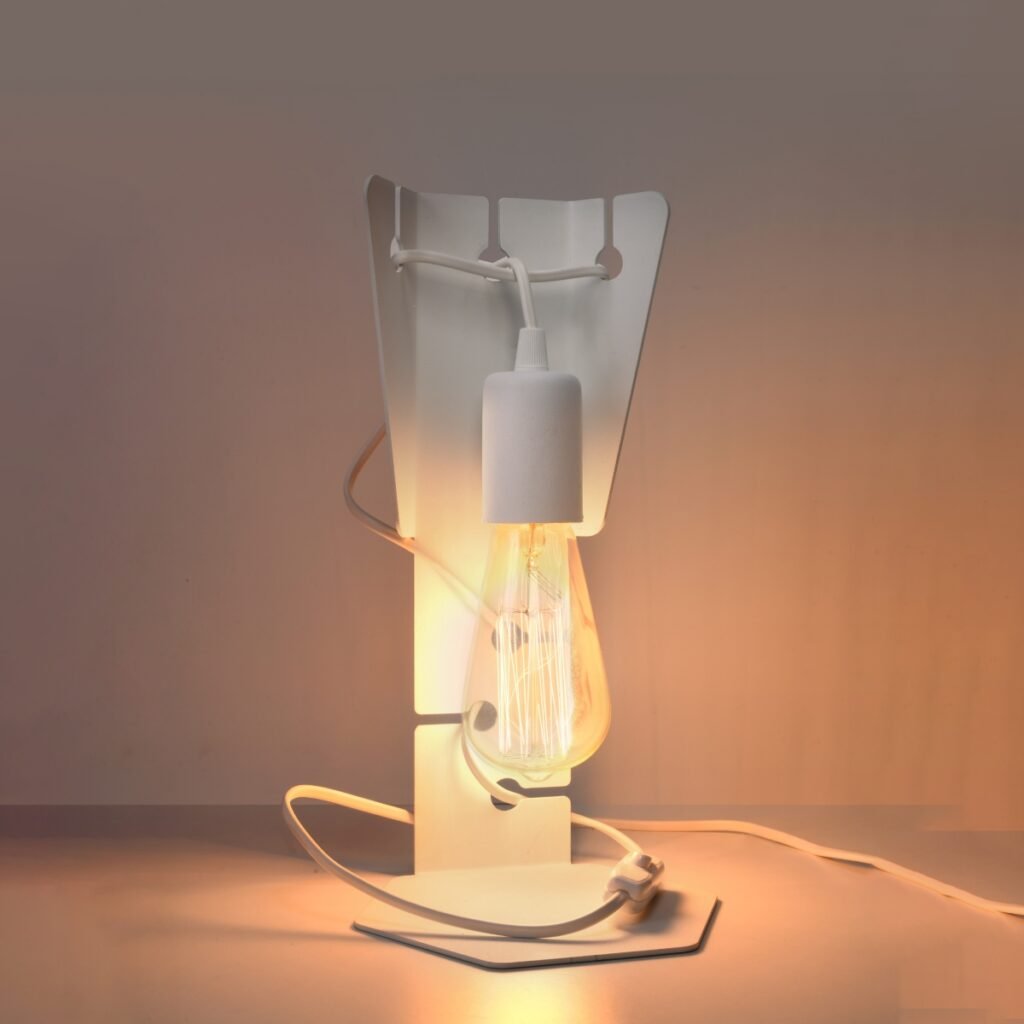
Modern Table Lamps
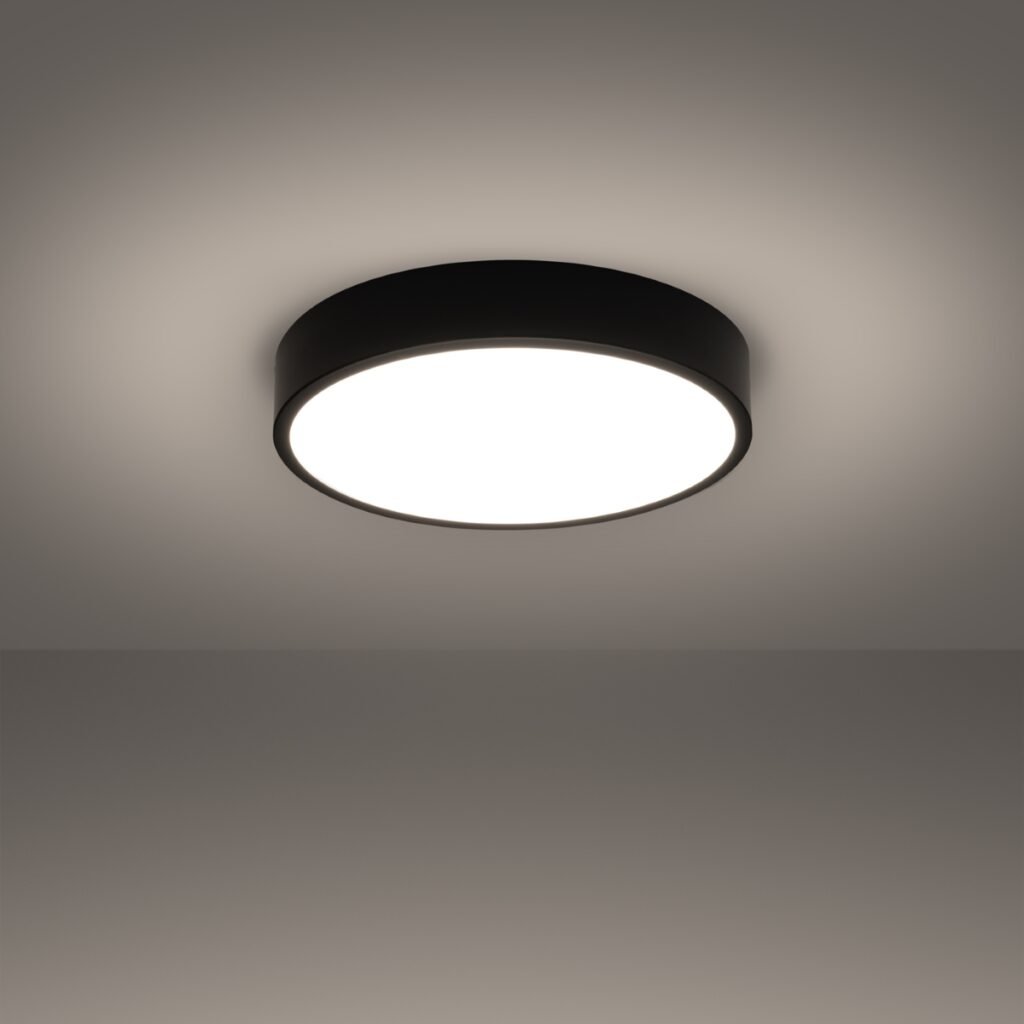
Large Ceiling Lights
Additional Ideas Worth Considering
LED strip lighting behind headboards:
Creates a soft, ambient glow that’s perfect for late evening without the brightness of bedside lamps. Choose warm white strips and ensure they’re dimmable.
Wardrobe and closet lighting:
Internal LED lighting makes choosing clothes easier and adds a luxury touch. Battery-operated LED strips are easy to retrofit if you don’t want to run new wiring.
Reading nooks:
If your bedroom includes a chair or reading corner, add a floor lamp or adjustable task light specifically for this area. This creates a dedicated relaxation spot separate from the bed.
Smart lighting control:
Smart bulbs or switches let you control bedroom lighting from your phone, set schedules (lights gradually brighten to wake you), or use voice control. Particularly useful for ambient lighting you want to turn off without getting out of bed.
Common Bedroom Lighting Mistakes to Avoid
Relying solely on ceiling lights: Creates harsh, unflattering light and offers no flexibility.
Bedside lamps that are too short: Should be tall enough that the bottom of the shade sits at shoulder height when you’re sitting up in bed.
Using cool white or daylight bulbs: Makes relaxation difficult and interferes with sleep patterns.
No dimmer switches: You need the ability to lower light levels in the evening.
Unbalanced light placement: Having light only on one side of the bed creates an unbalanced, lopsided feeling.
Creating Your Perfect Bedroom Sanctuary
Transforming your bedroom lighting needn’t be complicated or expensive. Start with these priorities:
- Replace any harsh or cool-toned bulbs with warm white (2700K-3000K) LEDs
- Add dimmer switches to your main ceiling light
- Install or improve bedside lighting—matching pendants, wall lights, or quality table lamps
- Consider one or two accent lights to add depth and warmth
The combination of soft ambient light, functional task lighting, and subtle accent pieces creates a bedroom that feels genuinely restful—a space you look forward to retreating to at the end of each day.
Whether you choose timeless brass fixtures from Mullan Lighting, contemporary LED designs from Sollux, or a mix of styles that reflects your personal taste, prioritize warm tones, layered lighting, and dimmer control. These elements form the foundation of genuinely calming, comfortable bedroom lighting.
Frequently Asked Questions
What is the best lighting colour temperature for bedrooms?
Choose warm-white LEDs between 2700K–3000K for a cozy, calming atmosphere. This temperature range mimics traditional incandescent bulbs and doesn’t interfere with melatonin production, making it easier to wind down before sleep. Avoid cool white (4000K+) or daylight (5000K+) bulbs in bedrooms as they’re too stimulating.
Should I use dimmable bulbs in a bedroom?
Absolutely. Dimmable LEDs paired with a compatible dimmer switch give you complete flexibility—bright enough for getting dressed in the morning, low enough for calm evening ambiance. This versatility is essential for creating the right atmosphere at different times of day. Just ensure your dimmer switch is rated for LED bulbs to avoid flickering.
Which Light Bulbs to Use
How high should bedside pendants hang?
A good starting point is 30–40cm above the bedside table surface, or positioned so the bottom of the shade sits roughly at shoulder height when you’re sitting up in bed. This provides comfortable reading light without glare. Adjust based on your ceiling height and personal preference—there’s flexibility in exact positioning.
How many lights do I need in a bedroom?
At minimum, you need ambient lighting (ceiling fixture) plus bedside lighting (two matching fixtures for double beds, one for single beds). Ideally, add at least one accent light—a table lamp on a dresser or wall light—to create proper layering. Larger bedrooms benefit from 5-7 light sources across the three lighting layers.
Are brass fixtures suitable for modern bedrooms?
Absolutely. Brass adds warmth and character to contemporary spaces, preventing them from feeling cold or clinical. Aged brass or antique bronze finishes work particularly well in modern bedrooms, offering visual warmth whilst maintaining clean lines. Mix brass with neutral textiles and simple furniture for a balanced contemporary look.
What’s the best lighting for reading in bed?
Adjustable wall-mounted reading lights or hanging pendants positioned at shoulder height work best. The light should be bright enough for comfortable reading (60W equivalent minimum) but directional so it doesn’t disturb a sleeping partner. Choose fixtures that let you angle light onto your book whilst keeping it out of your direct line of sight to avoid glare.
Consider Poster or Picture Lights
Should bedroom lights match exactly?
Bedside lights should match for visual balance and symmetry, but other lights in the room can vary. You might have matching brass pendants beside the bed, a different brass table lamp on a dresser, and a neutral ceiling fixture—this creates interest whilst maintaining cohesion through similar finishes or tones.
How can I make my small bedroom look bigger with lighting?
Use wall-mounted or hanging lights to free up surface space, choose light-colored shades that reflect rather than absorb light, add mirrors to bounce light around the room, and paint walls in pale, reflective colors. Multiple smaller light sources placed around the room also make spaces feel larger than one central overhead light.
Ready to transform your bedroom into a calm, beautifully lit sanctuary? Browse our complete range of bedroom lighting, including brass fixtures, pendant lights, and energy-efficient LED options.
Our team can help you plan the perfect lighting scheme for your space—get in touch for expert advice tailored to your bedroom.

